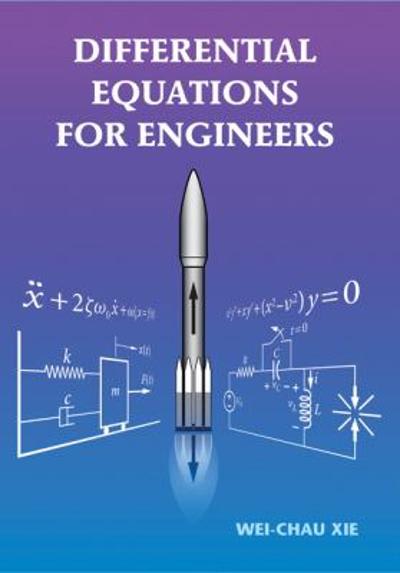Question
A review of univariate normal inference theory: consider a random sample from an assumed normal distribution with unknown mean . We want to test the
A review of univariate normal inference theory: consider a random sample from an assumed normal distribution with unknown mean . We want to test the hypothesis and (a 2-sided alternative hypothesis). The most powerful test statistic is the "sample score":
We reject if is large and do not reject if lies in the confidence interval . In a multivariate setting, this confidence interval becomes a confidence region which extrapolates from the above form to:
Where we are assuming there are observations of random variables. The sampling distribution (found by Harold Hotelling) is:
Where is an distribution with and degrees of freedom. This means that the confidence region at confidence of a dimensional random vector being normally distributed is the ellipsoid formed by all mean vectors that satisfy:
Questions
1.Consider the simple data matrix [5, 2, 9 -1, 4 -4 ]
evaluate and give its distribution
2.Complete Problem 14.4 and Problem 14.5 and give interpretations of your results. What is a reasonable interpretation of this statistical test? Construct confidence regions for each problem to aide your interpretations. How might this process compare to testing each univariate variable independently and what problems might that incur?
Numerical Questions
Instructions: Answer the following using the R statistical computing platform. Your answer should include the code you wrote plus the output of such code and English rhetoric / coding comments where necessary. In each list any mathematical assumptions about what method you are using.
N1.[Two-Sample Mean Test when ] As an extension to Wednesday's discussion, what if the two samples have different variance structures. In a large sample problem, we can do the same procedure but with an approximate test. A confidence ellipsoid for is all satisfying
Suppose two measurements of power usage for electric car drivers and non-electric car drivers .The summary statistics are:
Find 95% simultaneous confidence intervals for the differences in the mean components and discuss what can be concluded in this test. [30 pts]
N2. [Multiple-Sample Testing of Variance Matrix] Problem 14.8, 14.9, and 14.10 [20 pts each]
Ethical Questions
Instructions: Answer the following in a mathematically sound argument (proof) using combinations of English / symbols as needed.
E1. (6.1) Consider the ethical statistics guidelines laid out by the American Statistical Association. Statistical errors can be technical and sometimes even buried within conventional practices such as taking a statistically significant comparison as strong evidence in favor of a favored hypothesis. How would you report the result of N1 when the results were not in your favor? Analyze your ethical decision made from the Christian worldview. [5 pts]
E2. (6.2) Give an actual example of a misuse/misinterpretation of statistical hypothesis testing (it could be univariate) had adverse outcomes. Include your sources. [5 pts]
A review of univariate normal inference theory: consider a random sample from an assumed normal distribution with unknown mean . We want to test the hypothesis and (a 2-sided alternative hypothesis). The most powerful test statistic is the "sample score":
We reject if is large and do not reject if lies in the confidence interval . In a multivariate setting, this confidence interval becomes a confidence region which extrapolates from the above form to:
Where we are assuming there are observations of random variables. The sampling distribution (found by Harold Hotelling) is:
Where is an distribution with and degrees of freedom. This means that the confidence region at confidence of a dimensional random vector being normally distributed is the ellipsoid formed by all mean vectors that satisfy:
Questions
1.Consider the simple data matrix [ evaluate and give its distribution
2.Complete Problem 14.4 and Problem 14.5 and give interpretations of your results. What is a reasonable interpretation of this statistical test? Construct confidence regions for each problem to aide your interpretations. How might this process compare to testing each univariate variable independently and what problems might that incur?
Numerical Questions
Instructions: Answer the following using the R statistical computing platform. Your answer should include the code you wrote plus the output of such code and English rhetoric / coding comments where necessary. In each list any mathematical assumptions about what method you are using.
N1.[Two-Sample Mean Test when ] As an extension to Wednesday's discussion, what if the two samples have different variance structures. In a large sample problem, we can do the same procedure but with an approximate test. A confidence ellipsoid for is all satisfying
Suppose two measurements of power usage for electric car drivers and non-electric car drivers .The summary statistics are:
Find 95% simultaneous confidence intervals for the differences in the mean components and discuss what can be concluded in this test. [30 pts]
N2. [Multiple-Sample Testing of Variance Matrix] Problem 14.8, 14.9, and 14.10 [20 pts each]
Ethical Questions
Instructions: Answer the following in a mathematically sound argument (proof) using combinations of English / symbols as needed.
E1. (6.1) Consider the ethical statistics guidelines laid out by the American Statistical Association. Statistical errors can be technical and sometimes even buried within conventional practices such as taking a statistically significant comparison as strong evidence in favor of a favored hypothesis. How would you report the result of N1 when the results were not in your favor? Analyze your ethical decision made from the Christian worldview. [5 pts]
E2. (6.2) Give an actual example of a misuse/misinterpretation of statistical hypothesis testing (it could be univariate) had adverse outcomes. Include your sources. [5 pts]
Step by Step Solution
There are 3 Steps involved in it
Step: 1

Get Instant Access to Expert-Tailored Solutions
See step-by-step solutions with expert insights and AI powered tools for academic success
Step: 2

Step: 3

Ace Your Homework with AI
Get the answers you need in no time with our AI-driven, step-by-step assistance
Get Started


